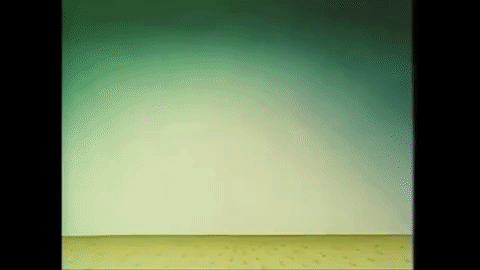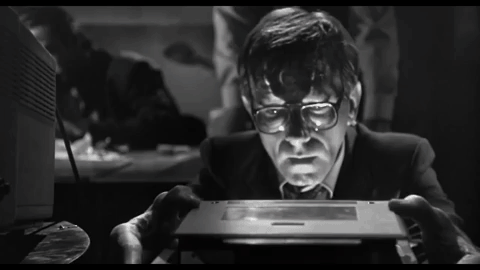Andy Prisbylla / June 22, 2022
Like it or not, we’re all casualties of the cola wars. What began as a pissing contest between beverage barons PepsiCo and the Coca-Cola Company in 1902 eventually became a cultural phenomenon in the mid-1980s. With Coca-Cola’s sugary supremacy challenged in a series of blind taste tests, combined with Pepsi’s subliminal marketing of American patriotism through its red, white, and blue branding, New Coke was introduced in early 1985—a new formula engineered to replace the original company recipe. Within three months, the product was pulled due to overwhelming backlash from the public, the original formula reinstated as Coca-Cola Classic. This led to a boost in sales, with industry insiders speculating that the “great new taste” was nothing more than a marketing scam used to generate renewed product interest. Whatever the motive, the original Coke was here to stay—even if it never really left. Now it was just a matter of selling it back to the young audience who dominated ‘80s consumer culture. While previous promotional campaigns focused on virtuous Americana, marketing mavens now needed something more radical and irreverent. At the time, a certain computer generated media personality created solely to showcase music videos was becoming quite popular. Only this image wasn’t computer generated at all, and it was born from a distinctly anti-corporate sensibility. In 1986, Coca-Cola launched its “Catch the Wave” campaign: the new face of Coke belonged to Max Headroom.
The subversive paradox created when Max Headroom turned pitchman for corporate cola is just one of many in the career of Rocky Morton and Annabel Jankel. While the creative duo had nothing to do with the Coke campaign, their creation was now leaving an imprint on the consumer landscape. As post-punk pioneers with a heavy situationist bent, Morton and Jankel took being on the cutting edge of pop culture seriously. But the method of their engagement with the Spectacle might have turned off Situationism’s founder Guy Debord. While culture jammers like Craig Baldwin and John Law fought the consumer wars from the trenches of the underground, Morton and Jankel were performing hand-to-hand combat with mass media marauders in the corporate arena: a dangerous place to be. The deconstruction that Morton and Jankel utilized in their commercials, music videos, and films was not only satirical but self-reflexive, the kind of artistic-expression-as-critique that can prove problematic within a capitalist society.
The term “culture jam” was coined by Mark Dery in the post-punk climate of 1984, right where Morton and Jankel made their bones. Hailing from working-class British backgrounds before studying film and animation—Morton worked on the famous marching hammers in the 1982 feature film adaptation of Pink Floyd’s The Wall before being fired—the duo would embrace the eclectic, avant-garde fusion that followed traditional three-chord punk. Jankel’s older brother Chaz—who would go on to score the couple’s 1988 neo-noir deconstruction D.O.A.—played guitar and keyboards in Ian Dury’s band the Blockheads, and served as an entry point for his sister to enter the scene. What Chaz brought musically, Morton and Jankel complemented visually with an assortment of videos and promos created through their innovative production company Cucumber Studios.
Based out of London, the production house soon burned bright in the post-punk/new wave scene as the de-facto stop for commercial record companies looking to merge their tunes with dynamic visuals. While traditional analog animation was utilized—evident in their early promo for the animated adaptation of Marx for Beginners and their music video for the Tom Tom Club’s “Gangster of Love”—the pair also employed experimental computer graphics. In a hybrid mix of analog and digital, their 1979 music video for “Accidents Will Happen” by Elvis Costello & The Attractions combined rotoscoping techniques with early computer generated imagery to create a vector readout of Costello in an early instance of CGI used in a music video. These innovations with the medium eventually led to the duo writing and curating 1984’s Creative Computer Graphics, which chronicled pioneering achievements in CGI while introducing new digital technologies to a wider audience.
The success of Cucumber Studios caught the attention of programming purveyor Peter Wagg of Chrysalis Records, who was looking to package a series of music videos within the framework of a television talk show. Wagg turned to advertising creative George Stone, who took this idea and subverted it. Car parks in Britain at the time were outfitted with yellow-and-black-striped safety signs labeled “Max Headroom,” and Stone believed the term would not only make a great title but also allow the program to use the parking signs as a form of subvertising. Morton and Jankel, meeting with Stone, suggested that something more was needed than just generic graphics to introduce each video. The media landscape of 1980s television was saturated with talking heads, and at the same time the MTV VJ was coming into prominence. Bored by the idea of just another flesh and blood huckster, Morton, Jankel, and Stone thought a fully formed computer-generated figurehead would work better. The only issue was that this technology hadn’t been created yet. Predating the bait-and-switch tactics of his future Coca-Cola overlords, the CGI aesthetic of Max Headroom was faked using prosthetics and opticals—inadvertently constructing a situationist prank and fooling the public at large.
When Max Headroom: 20 Minutes Into The Future premiered in the UK on April 4, 1985, the hour-long cyberpunk telefeature not only served as backstory to Max’s forthcoming Tonight Show-style talk program The Max Headroom Show, but also spawned an ABC Network television series in the US that continued the original film’s story. Morton and Jankel had no involvement with the ABC series and criticized it for its homogeneous approach to the material and lack of credit to the creators. Set in a dystopian future, the original telefilm showcased a world where television programming is the leading commodity and society is controlled by a cabal of networks run by a ruthless media oligarchy. Within this framing, Morton and Jankel simultaneously used the character of Max Headroom to spotlight the mechanisms of corporate greed while allowing said greed to thrive. Max existed between these two worlds and created a paradoxical paradigm. Not only was he a figurehead for the music and soda-pop industries; he was also a symbol of radical intervention—which would later be displayed in the infamous broadcast signal intrusion of WGN-TV’s newscast on November 22, 1987.
The dichotomy devised during the Max Headroom years would continue to follow Morton and Jankel into their feature film career with 1988’s D.O.A. and 1993’s Super Mario Bros. The concept of remix theory is paramount in understanding these films and how it affected the duo’s time in Hollywood. Remix culture encourages the transformation of derivative works through a mash-up mix of one or more media, and as remix expert Eduardo Navas suggests, there are three types of remix methods to explore. Extended remix is a longer version of an original work, while selective remix consists of adding or subtracting elements from the work to create something new. Reflexive remix allegorizes or transforms the aesthetic and ethos of the original work—challenging the original intent and claiming autonomy.
Morton and Jankel’s tinseltown rebellion is one of a reflexive remix and deserving of reappraisal—something both D.O.A and Super Mario Bros have received in recent years. The wave of irony that dominated the Hollywood filmmaking aesthetic in the early ‘80s was soon on the wane, and both films were met with derision from audiences and critics alike, with Super Mario Bros receiving the most volatile response. Where D.O.A. won positive reviews by some for its colorful neo-noir deconstruction of Rudolph Mate’s 1950 classic, Morton and Jankel’s dissection of the popular Nintendo video game opened to nearly universal disdain. Regardless of the behind-the-scenes drama and production hell that has been unfairly presented in the press, the cultural zeitgeist shifted from a pop sensibility of kitsch experimentation in the 1980s to a cynical worldview of uniformity and stasis in the 1990s. The duo’s Max-inspired interpretation of the lovable plumbers taking on King Koopa to save Princess Daisy was too esoteric for children to understand or adults to enjoy. Script revisions and loss of creative control at the hands of the studio didn’t help matters much, and Morton and Jankel’s Hollywood career was over before it even really began. They would return to the world of commercial advertising, where their radical tendencies were more (illicitly) successful—such as using subversive sex to sell fast food for Hardees. Soon after, they formed the highly successful commercial production company MJZ, which represents a host of acclaimed filmmakers like Craig Gillespie, Harmony Korine, and Mike Mills. Within time the duo would dissolve their partnership—both creatively and romantically. Jankel would move on to direct more features after a long hiatus—such as 2009’s Skellig: The Owl Man and 2018’s Tell It to the Bees—while Morton continues to produce commercial campaigns for numerous corporate clients.
As ‘80s eclecticism gave birth to a 21st century postmodern world, where reality is fluid and nothing is free, the careers of Rocky Morton and Annabel Jankel seem to suggest that the only response to late capitalism is through disruptive action. When corporate interests seek legitimacy on the backs of creative originals, sometimes the only recourse you have is protest by insurgency. Each project during their partnership, whether intended or not, has acted as a media virus whose effects continue to alter perspectives both old and new. If there’s one lesson to be learned from Morton and Jankel, it’s that infiltration is key.
![]() Andy Prisbylla is the nucleus behind a series of pen names for underground filmmaker and media theorist Psycho Gnostic of Steel City, PA. Connect with them on Twitter.
Andy Prisbylla is the nucleus behind a series of pen names for underground filmmaker and media theorist Psycho Gnostic of Steel City, PA. Connect with them on Twitter.










Stellar article!